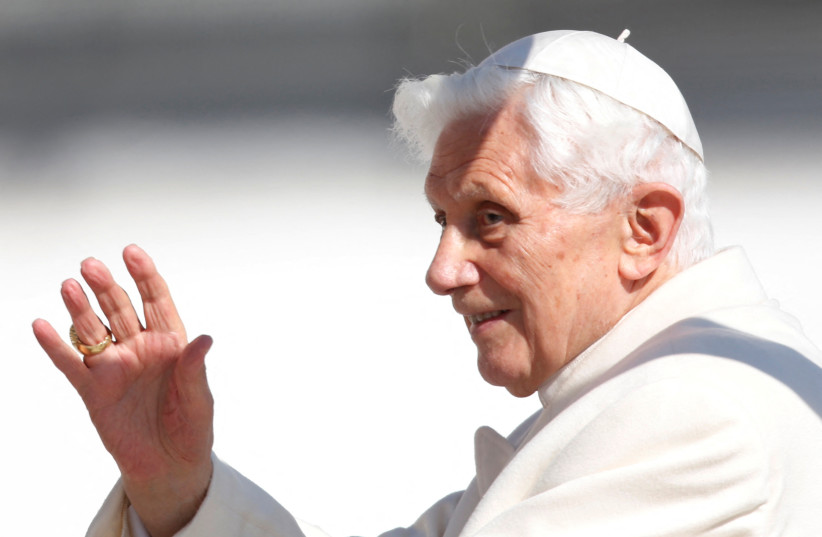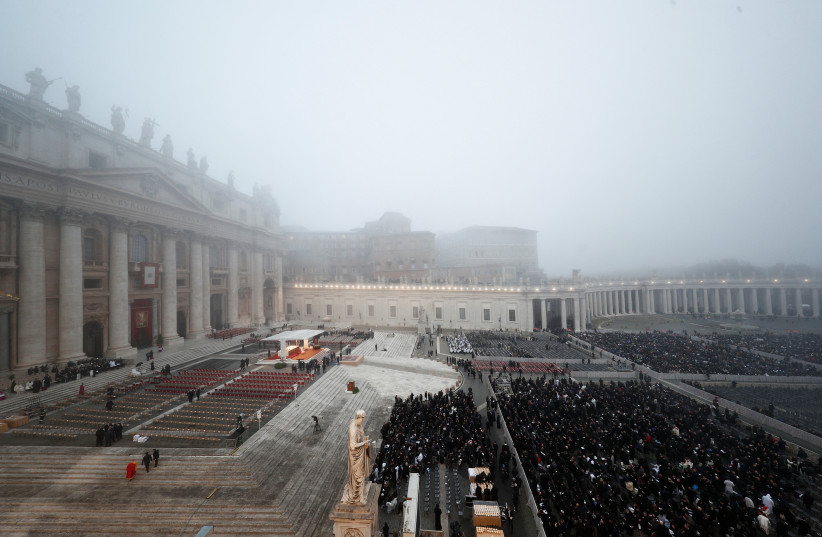Supporters demand sainthood for Benedict as Pope Francis leads funeral

More than 1,000 Italian security personnel were called up to help safeguard the event, and air space around the tiny Holy See has been closed off for the day.
Benedict's death on Saturday brought to an end a decade of the former and present pope living side-by-side in the Vatican and it was the first time in more than 200 years that a pontiff had led the service for his predecessor.
At the end of the funeral in St. Peter's Square, some people shouted in Italian "Santo Subito!" (Make him a saint now!). It was the same phrase used at the funeral of Pope John Paul II in 2005, although by many more people then.
Three of the last five popes have been made saints, but only around a third of all pontiffs have been canonized in the Church's 2,000-year history.
While many leading figures have praised Benedict since his death, criticism has also been aired, including by victims of clergy sexual abuse, who have accused him of seeking to protect the Church at all costs
Francis, who sat for most of the service because of a knee ailment, including while he read the homily, in which he only mentioned Benedict by name once at the service attended by 50,000 people in a fog-shrouded square.
Benedict died at 95 last Saturday in a monastery within the Vatican gardens where he moved after becoming the first pontiff in 600 years to stand down, opening the way for the election of Pope Francis, who has proved a more reformist, hands-on leader.
The lying-in-state ended on Wednesday evening and the body was put into a plain cypress wood coffin ready for the funeral. A one-page account of Benedict's papacy, along with other items, including Vatican coins minted during his reign, were also tucked into the coffin.
The three-page account of his life and papacy, written in Latin, says he "fought with firmness" against sexual abuse by clergy in the Church.
While many leading figures have praised Benedict since his death, criticism has also been aired, including by victims of clergy sexual abuse, who have accused him of seeking to protect the Church at all costs.
Three coffins
After the funeral ceremony, the coffin will be taken back inside the basilica and encased in zinc before being sealed in a second wooden casket.
Because Benedict was no longer a head of state when he died, only two countries, Italy and his native Germany, will send official delegations to the funeral.
Others leaders, including the king and queen of Belgium and the queen of Spain, and about 13 heads of state of state or government, will attend in a private capacity. Most nations were being represented by their ambassadors to the Holy See.
It is a far cry from the last papal funeral in 2005, when dozens of kings, presidents and prime ministers joined more than a million people who flooded the streets around the Vatican to pay their respects to Benedict's charismatic predecessor, John Paul II.
An intellectual theologian, Benedict was always likely to rule in the shadow of John Paul, who was credited with helping end the Cold War. But his time in charge was to a degree spent trying to overcome problems the Church had ignored or covered up in previous decades, including rampant sexual abuses by clerics.
Benedict himself acknowledged he was a weak administrator, and after eight years in the job he stunned the world's 1.3 billion Catholics in 2013 by resigning, saying he was no longer strong enough to lead the Church due to his "advanced age."
Even though he largely avoided public appearances in subsequent years, he remained a standard-bearer for Catholic conservatives, who felt alienated by reforms ushered in by Francis, including cracking down on the old Latin Mass.
Over the past three days almost 200,000 people have filed past Benedict's body dressed in a miter and red vestments, his hands wrapped in a rosary, which was placed on a bier in St. Peter's Basilica without any papal regalia.
At his request, Benedict will be buried in the underground Vatican grottoes in the niche where first Pope John XXIII and then John Paul II were interred before their remains were transferred to more prominent places in the basilica above.
Jerusalem Post Store
`; document.getElementById("linkPremium").innerHTML = cont; var divWithLink = document.getElementById("premium-link"); if (divWithLink !== null && divWithLink !== 'undefined') { divWithLink.style.border = "solid 1px #cb0f3e"; divWithLink.style.textAlign = "center"; divWithLink.style.marginBottom = "15px"; divWithLink.style.marginTop = "15px"; divWithLink.style.width = "100%"; divWithLink.style.backgroundColor = "#122952"; divWithLink.style.color = "#ffffff"; divWithLink.style.lineHeight = "1.5"; } } (function (v, i) { });


